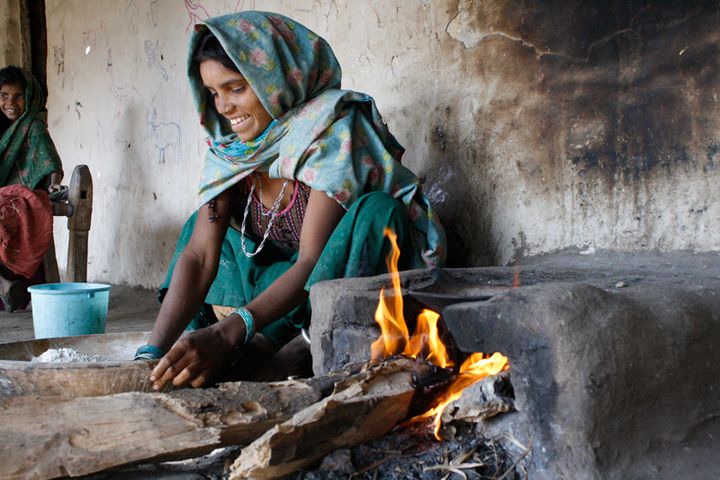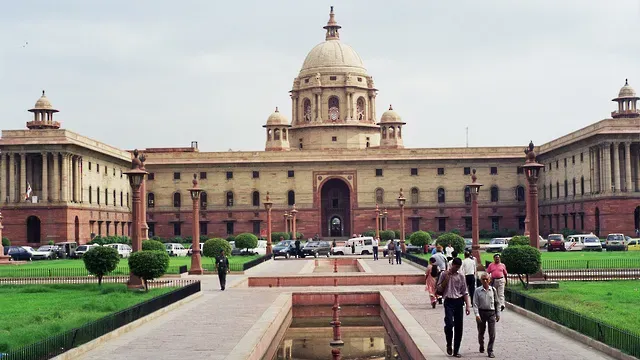Post COP26, India’s crucial decade
What needs to happen for the world’s third largest emitter to meet its targets

Welcome to this special post-COP26 edition of Lights On, a newsletter that brings you the key stories and exclusive intel on energy and climate change in South Asia.
If you are not a subscriber, you can sign up below, for free, or you can support my work by purchasing a membership:
The science is clear. For a chance to keep global warming within 1.5°C as stated in the Paris Agreement, global emissions have to nearly halve by 2030, compared to 2010 levels, before reaching net zero by 2050.
While a certain amount of future warming is already locked in due to past emissions, the next decade will make or break the most hopeful future climate scenario. For India, the world’s third global emitter and still one of the poorest countries by GDP per capita, this means squaring decarbonisation and development, with the additional challenge of the pandemic recovery.
The Modi administration entered this year’s UN climate talks with a set of fresh clean energy goals and a net zero target for 2070, reportedly conditional to the availability of a trillion dollars in financial assistance. While it’s clear that Modi wants as much of India’s new energy demand as possible to be met by renewable sources, the negotiating team made no mention of a move away from fossil fuels. Instead, it imposed a last minute change in the final version of the Glasgow Climate Pact, to reflect its dissent from a coal phase-out target, proposing coal ‘phase-down’ as an alternative:

Beyond the discontent it caused in the COP26 plenary, India’s stance is part of a coherent strategy that it will now have to translate into practical actions at home. Whether it agrees to further upgrade its targets in 2022, as suggested in the Glasgow resolution, or chooses to stick to what it has promised this year, India’s road ahead will be charted by a patchwork of forces extending well beyond the UN negotiating rooms.
The choice to oppose a call for coal phase-out “ties into the larger climate equity stance that India has been taking,” says Anya Bharadwaj, analyst at the National Investment and Infrastructure Fund (NIIF), a sovereign wealth fund set up by the government of India in 2015. “It's a way to also protect our economy, because a complete phase-out of fossil fuel at this stage would mean an immediate rewiring of our entire industrial base,” she explains, “and I think that needs to happen more gradually”. She adds that historically India has taken its climate commitments very seriously, and wouldn’t promise something that is not realistic.
Preparing for a just transition
Sandeep Pai, a senior researcher at the Centre for Strategic and International Studies in Washington DC, says that India needs to be given ‘carbon space’ to meet its development needs. A 2070 net zero target is welcome, but the details still need to be worked out: “When do we peak our emissions, and from there how do we go down? Now, that part is linked to what happens to the coal sector going forward,” he says.
For the coming decade, India has no plans to reduce its coal output; it will instead build clean energy capacity on top of what’s already there. But there are a couple of things it should do to prepare for the inevitable move away from coal, to make sure it doesn’t create a shock to the economy and — more importantly — Indian society, says Pai. The first thing to do even before coal decline starts is economic diversification: “you can start to attract new industries, investments in [coal dependent] states like Jharkhand, or Chhattisgarh, and Telangana,” he explains. Another measure that could be rolled out within this decade is the cleanup of existing legacy mines that the coal industry has exploited and left behind. “Cleaning up those places will help generate investments but also create local jobs.”
Decarbonising agriculture
India’s climate pledges in Glasgow offer more clarity around the additional clean energy infrastructure that will meet new demand, says Bharadwaj, with 500GW of renewable energy, up from 450, and 50 percent of its total electricity coming from renewable sources by the end of the decade. However “so far we've only been focusing on grid scale electricity targets,” she says, which don't capture some of the most polluting sectors such as construction, transportation, and agriculture.
“Agriculture itself accounts for 1 billion tonnes of India's 3.5 billion tonnes of carbon,” she says. “So the way we have a National Electric Mobility Plan, we should have a central National Agricultural Decarbonisation Plan which encourages states with incentives and various schemes.” India has a range of subsidies for the agricultural sector, Bharadwaj explains. “Many of those can be modified through the lens of a green transition.”
But while missing from the COP26 announcement, carbon intensive sectors such as heavy industries and agriculture may well be the field where the race to 2030 is won or lost, according to Rahul Walawalkar, president of the India Energy Storage Alliance and adviser to the Central Electricity Regulatory Commission (CERC).
Setting up the ecosystem
The government can provide direction and remove barriers via subsidies and incentives, but ultimately India’s energy transition will be driven by industry, Walawalkar says. “My hope is that the energy transition will unfold much faster than politicians or bureaucrats are thinking right now,” he says. “It's like what happened with smartphones in India, no one expected that penetration would grow as fast back in 2015.” In the case of mobile phones, a mix of technical and commercial factors were all heading in the right direction, Walawalkar says, and consumers responded.
Storage and hydrogen technologies seem to be on a similar path. Combined with renewables, batteries are becoming more cost effective than buying power from the distribution utility for the commercial industrial sector, which makes up 30-35 percent of India’s energy consumption, Walawalkar explains. By 2025, India will have set up several gigafactories, or manufacturing facilities producing batteries, solar panels, fuel cells and electrolysers for the production of green hydrogen using renewable sources.
Unlike other countries, where hydrogen is pitched as a solution for small vehicles or other sectors in which it would compete with, and lose against, other renewable technologies, “India is betting on using almost 95 percent of its green hydrogen in the industrial and agricultural sectors,” Walawalkar says, “for applications such as fertilisers, steel and petroleum refineries,” in a way that will complement renewable growth rather than stifling it.
A combination of batteries and hydrogen technologies will generate a huge amount of additional demand, he adds. “Without green hydrogen in the picture, our analysis showed that 450 gigawatt of renewable capacity would have been almost impossible for India to build.”
Walawalkar believes that within the next 10 years, today’s decarbonisation challenges are going to become an economic opportunity rather than a burden. “The way I see it, if we involve big businesses in this transition, and not just the government,” he says, “there is a good chance for India to become a real contender in the solutions part and not just a follower and adopter of technologies.”
That’s all for today! If you like what you read, please consider sharing this newsletter with a friend or two:



